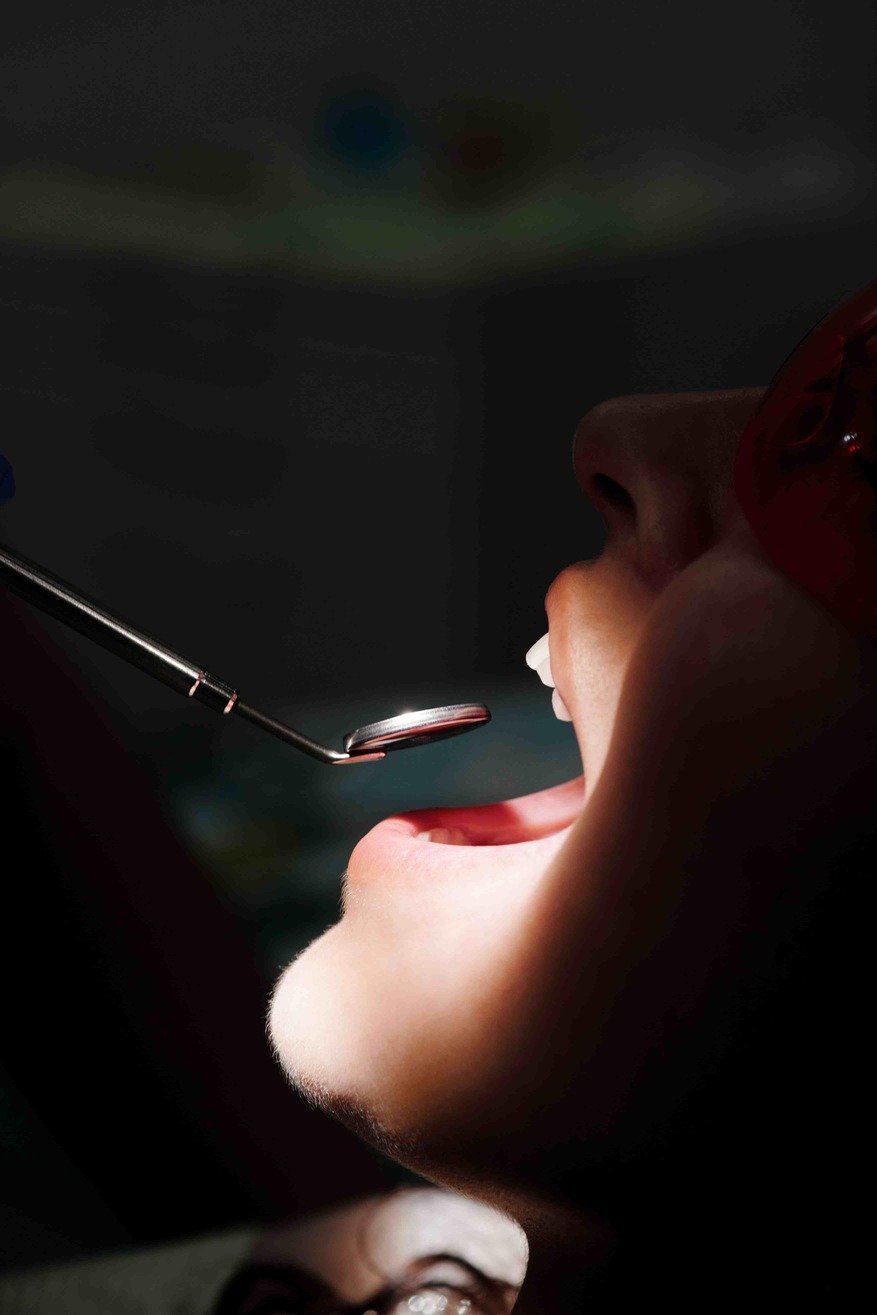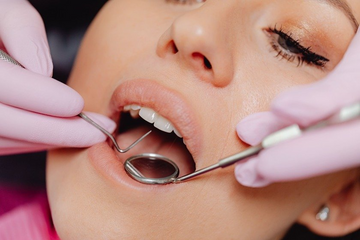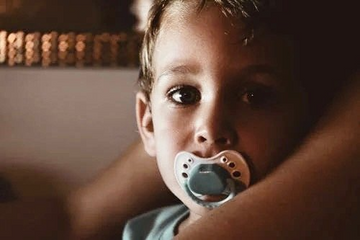Pediatric dentistry.
Pediatric dentistry is one of the seven recognized clinical specialty. It includes all fields of adult dentalist that can be applied to children. However, it has many methods that are specific for the strange needs of the primary (child) teeth and the challenges of the developing baby.
The most significant difference between pediatric and adult dental is that children need to understand and practice the right psychological principles of dental doctors so that it allows children to have positive, relatively painful experience in this important health. Bad memories of traumatic dental therapy during childhood can negatively affect children and reject enough dental care for their lives.
Pediatric dentistry.
Pediatric dentistry is distinguished by the art of an age-defined specialty and behavior guidelines. Whether a child is introduced to a dental or with intellectual disability, a middle -aged patient continues to take care of a trusted and positive relationship, and to provide quality dental care when creating a positive relationship is essential.
Treating children can be the most rewarding experience that will face a dentist. With proper mindset, training and environment, dental treatment for children should be pleasant for both children and practitioners. The idea of managing behavior has developed to develop a relationship with children, parents and dentists from the idea of "treating" with the child for years, which focuses on the child's oral health care needs.
Therefore, the terminology has also evolved from the management of behavior to the behavior guidelines. However, this chapter will also be used when mentioning previously published work in this regard, the management of the preferred word, behavior management.
The overall goal is to provide quality, safe dental care in the environment that is as pleasant as possible for children and that encourages oral health and positive attitude towards dental care in the future. Dental treatment creates a lot of demand for children, and to deal with these needs.
What is pediatric dentistry?
Pediatric dentists are dedicated to children's oral health from childhood to adolescence. They have the experience and ability to take care of the baby's teeth, gums and facial care throughout different stages of childhood.
Children begin to get their baby's teeth in the first 6 months of life. Within 6 or 7 years of age, they begin to lose their first set of teeth, which eventually be replaced by secondary, permanent teeth.
Pediatric dentistry is defined as a practice of preventive oral care from birth to adolescence as a practice, teaching and research.
Pediatric dentists include all aspects of oral health care for developing children. They also offer special dental treatment for sick and disabled children.
After a teenager becomes 18 years of age, they will no longer get treatment from a pediatrician. Instead, he will go to a general or family dentist.
Children should go to their pediatric dentist twice a year. Your baby should determine the first visit within six months of the first tooth burst.
Common oral conditions that affect children:
Dental carice, which is also called tooth decay or cavity.
Including gingivitis (light) and pediatric periodontal disease (advanced).
Tooth decay, enamel erosion is also referred.
Toothache and other abnormality in dental development, such as a cracking lip and palate.
Primary Orthodontic Treatment corrects serious problems of their bite before all children's permanent teeth burst.
3. Discover the Pediatric Dentistry.
The American Dental Association was established in 1859, and the pediatric dentistry occupation was established in 1947 after 88 years. The recognition of the children's dental health profession was relatively recent, as the dental community recognized the importance of dental health of children. In the American Dental Association Pediatric Dentistry and Orthodontics, we understand that children's dental health is vital for the lifetime love of their overall, great oral hygiene.
Dental treatment of Pediatric dentistry.
In the United States, according to the Center for Disease Control, about 20 percent of the baby between the ages of 5 and 11 has an unparalleled cavity. A survey by the American Academy of Pediatric Dentist found that less than half (46.6 percent) pediatric dentist practices the academy policy for the first oral examination of children at the age of one year. Often, pediatricians do not recommend their parents' dental tests, and so parents do not know that their children, in fact, can benefit from the initial inspection to the dentist.
A. Use of lasers.
In 2013 the AAPD published its first policy statement on laser use for pediatric dental patients. Although lasers are recognized as a viable alternative to traditional preparation tools in restorative dentistry, like any tool there are advantages and limitations, and perhaps laser use is best viewed as an alternative and complementary approach. Several advantages of laser caries removal include low heat generation, the need for little or no local anesthesia, and minimal involvement of the surrounding tooth structure.
Limitations include high start-up costs, the need for different equipment for different applications, and the need for additional practitioner training in the method. However, despite acknowledging that laser cavitation takes longer and has an unpleasant odor, a study 42 recently found that adolescents prefer laser to conventional preparations because they find it more comfortable.
B. Baby bottle corrosion.
Tooth decay in infants and young children is often seen in the form of baby bottle mouth decay. This common childhood dental problem occurs when sweet liquids such as apple juice, milk, or bottles containing sweet formula are left in the baby's mouth for long periods of time. It is also seen when a baby's pacifier is dipped in sugar or syrup and dropped into the baby's mouth during sleep.
Carbohydrates provide nutrients for oral bacteria that rapidly multiply and secrete acids that attack tooth enamel. Erosion can be accelerated during sleep because the normal amount of saliva used to wash the face decreases during sleep. Bottle mouth caries usually follows the contour of the bottle as it fits the upper front teeth, but it can also affect other teeth.Introduction to the primary teeth.
Baby teeth are important for future development. They enable children, in the formative stages of life, to chew food properly and speak clearly because they fix the shape of the jaws correctly. They also save space in the gums for future adult teeth. Another common childhood dental problem stems from untreated problems and early tooth decay can affect both eating and sleep, which can permanently affect a child's development at a critical time.
If teeth are lost too early in critical developmental stages, a child may develop significantly poorer eating habits or speech problems. If a baby molar is lost prematurely due to severe decay, the baby teeth next to the missing molar can move into the gap and cause gapping problems in adults. If you notice these common childhood dental concerns or signs of problems with oral health, contact us. We are here to help.

C. Resistance.
Clean baby's gums with a clean gauze pad or washcloth after each feeding
Start brushing your baby's teeth without toothpaste as soon as the first tooth appears
Clean the gums and massage the area where there are no teeth
Floss between baby's teeth when all teeth are in
Make sure the child is getting enough fluoride. If our local water does not contain fluoride, ask your dentist if you need to use a supplement. Fluoride reduces cavities
Fill the bottles with plain water for sleeping
A dental exam should be part of your baby's health checkup routine soon after the first tooth erupts (usually around 6 months).
A child should visit a pediatric dentist every six months for a dental examination and cleaning. These tests help reduce the chance of disease by keeping the mouth and teeth healthy throughout life.
Early Childhood Caries (ECC).
Cavities are the most commonly dental conditions affecting children of all ages.
From the 1970s to the 1990s, the incidence of dental cavities among children aged 2 to 11 years decreased. However, since the mid-1990s, studies have shown an increase in tooth decay in young children.
Oral habits that develop during the first three years of a child's life (when baby teeth are fully erupted) may not be the time for parents. But these habits can be hard to break, although most children outgrow them over time.
Preventive Pediatric Dental Treatment.
Preventive dental treatments for children include sealants and fluoride. Both of these treatments help prevent cavity formation.
D. Dental sealants.
If a child's baby (primary) teeth have deep pits and grooves, a sealant may be placed to prevent tooth decay. However, sealants are not usually placed on permanent teeth because they are not strong enough.
E. Fluoride treatment.
If children establish good dental care habits at home, they are less likely to develop cavities. These practices include using fluoride, brushing twice a day, and flossing once a day. If a child has a cavity, it is important to get restorative treatment, such as fillings or crowns.
Since the introduction of fluoride, tooth decay has decreased in children and adults.
The correct amount of fluoride in drinking water is 0.7 parts per million (ppm). However, excessive fluoride intake can lead to dental fluorosis.
Fluorosis is the hypomineralization of tooth enamel, leading to the development of abnormal enamel (white or brown spots). This condition is commonly seen in children, especially during the first few years of dental development.
Proper water fluoridation is supported by over 70 years of research and proven to be safe, effective and healthy.
Fluorosis does not cause health problems as the symptoms are mild and curable. Pediatric dentists specialize in fluoride treatment for children with fluorosis or low fluoride intake.
Two forms of fluoride are available:
A. Dietary fluoride supplementation.
This type of fluoride treatment comes in a tablet form. It is only recommended for children who drink low-fluoride water or who are at high risk of cavities.
B. Topical fluoride therapy.
Topical fluoride treatments are best for children ages 3 to 6. This type of fluoride comes in a few different forms, including:
Self-applied fluoride toothpaste.
Professionally applied treatments, such as gels, pastes and varnishes.
Topical fluoride treatments are applied during professional teeth cleanings and help prevent cavities.
Common pediatric dental conditions.
Tooth decay, gingivitis and periodontal disease can also affect children of all ages.
F. Regulation of pain response.
The AAP/AAPD guidelines establish a standard of care for minimal and moderate cure in pediatric patients. Guidelines focus on parental instructions, dietary precautions, and a preoperative health and physical assessment when considering predation events. Basically, the guidelines intensify presedation activities, with a keen eye on eliminating the possibility of sedation complications.
They also call for documentation and recording of events during treatment (eg, vital signs, medication given, and patient response).
The three standards of guidelines that have most dramatically changed the way pediatric sedation is practiced in the office setting relate to (1) staffing, (2) patient monitoring, and (3) preoperative prescriptions. Regarding personnel, the guidelines specify that an assistant other than the dental operator must participate in the sedation procedure and that this assistant must be trained to monitor appropriate physiological parameters and assist in any necessary support or resuscitation measures.
Regarding intraoperative monitoring procedures during sedation, guidelines specify continuous monitoring by a trained individual. A precordial stethoscope, blood pressure cuff, and pulse oximeter are considered the minimum equipment needed to obtain continuous information on heart rate and respiratory rate.
A preprocedural prescription is a written prescription provided to the parent to obtain and administer the sedative agent(s) outside the treatment facility. Preprocedural prescriptions to relieve anxiety (eg, diazepam [Valium]) may be helpful for older children who are highly anxious, although there is no strong evidence to support this idea.
For young children (eg, preschool age), prescription use is not appropriate outside of a medical facility and without professional supervision. Medications intended for sedation, especially at a dose that has even a slight chance of awakening the child or causing loss of consciousness, should not be given at home by parents or guardians the night before transport or the night before.
Taking the child to a facility where a procedure will be performed (eg, chloral hydrate, meperidine [Demerol], or high-dose benzodiazepines). Again, chloral hydrate and meperidine are not considered secondary tranquilizers or antianxiety agents and therefore should not be given to a child outside of a dental office.
In summary, the guidelines have had a major impact on how the practitioner approaches pediatric medicine. There is no systematic evaluation of the impact of guidelines on safety in pediatric sedation; However, it is our opinion that these guidelines are having a dramatic impact on improving sleep safety in the dental office environment.
5. Tooth decay.
Tooth decay is the irreversible loss of tooth enamel. It is caused by excessive exposure to acidic liquids and foods (with a pH below 5.0-5.7).
Baby (primary) teeth are more susceptible to decay than permanent teeth. This is because primary tooth enamel is thinner and less mineralized.
The prevalence of tooth decay in children ranges from 10 to 80 percent. In most cases, treatment is not required. Your pediatric dentist may recommend changes in lifestyle, behavior, and diet. However, when the condition becomes severe, fillings are usually necessary.
A. Gingivitis.
Gingivitis is inflammation of the gum tissue without bone or attachment.
Although gingivitis is a serious condition, it is less common in early primary teeth (baby teeth). Because children develop less plaque than adults.
For children who have gingivitis, a pediatric dentist will recommend professional dental care treatments, brushing and flossing.
B. Pediatric periodontitis.
If gingivitis is left untreated, it can develop into pediatric periodontitis, a serious oral disease that affects the gums and jawbone. Do you know, Common symptoms of periodontal disease include red, receding and bleeding gums?
This condition is mostly diagnosed in teenagers and adults. So is it that, Treatment options for PD include scaling and root planing. This treatment is a cleaning process between the teeth and gums (deep cleaning).
C. Procedures performed by pediatric dentists.
Daily use of fluoride is essential for every child, especially in the early stages of life. Fluoride helps reduce plaque build-up. It also helps prevent tooth decay, tooth loss.
However, if a child is already showing severe signs of tooth decay or other oral disease, more aggressive preventative treatment is needed.
Restorative pediatric dental treatments include:
D. Cavity fillings.
Cavity fillings are the most common restorative treatment for children with small cavities.
They are minimally invasive and are done in one dentist visit.
E. Pediatric pulp therapy.
Guidelines published by the AAPD recommend placing a protective base or liner on the pulpal and axial walls of a cavity preparation to act as a protective barrier between the restorative material and the tooth. Dentin is permeable and allows the movement of materials from the oral cavity to the pulp and vice versa. It was believed for many years that inflammation of the pulp was caused by the toxic effects of dental materials. However, there is sufficient evidence to show that pulpitis caused by dental material is mild and transient, with adverse reactions resulting from pulpal invasion by bacteria or their toxins. 18,19, Persistent marginal leakage with secondary recurrent caries is probably the most common cause of pulpal degeneration under restoration.
In deeper cavities, the dentin covering the pulp is thinner and the tubules are larger in diameter and more closely packed together. This dentin is highly permeable and should be covered with a material that seals the dentin well, usually glass ionomer cement.
The materials most recently used as cavity sealers are those that have demonstrated multisubstrate bonding capabilities for bonding dental restorative materials. The benefits of using these materials in composite bonding to tooth structure is a well-documented and accepted approach. However, their placement with amalgam is more controversial.
Mahler and colleagues observed no difference between amalgam restorations placed with and without bonding after 2 years and concluded that the use of bonding agents under traditional amalgam fillings should not be recommended. Thus protective liners or bases should only be placed in deep cavities close to the pulp.
6. Pharmacologic management of patient behavior.
Mark A. Pointing to Saxon guardians.
Information in written form should be reviewed with the child's caregiver and given to this person with notice of the scheduled appointment. This information should include a 24-hour contact number for the practitioner.
The American Academy of Pediatric Dentistry specifies the following preoperative dietary guidelines:
1. Clear liquids: water, fruit juice without pulp, carbonated beverages, clear tea, or black coffee up to 2 hours before the procedure.
2. Breast milk 4 hours before the procedure.
3. Infant formula up to 6 hours before the procedure.
4. Non-human milk 6 hours before the procedure.
5. Light meal 6 hours before the procedure. A light meal usually consists of toast and clear liquids. Meals that include fried or fatty foods or meats can prolong gastric emptying time and should be avoided.
6. It is permissible to take the necessary medicine regularly with a sip of water on the day of the procedure.
The reasons for these recommendations are twofold. First, emesis during or immediately after tracheal procedures is a potential complication that may result in aspiration of stomach contents, resulting in laryngospasm or severe airway obstruction. Aspiration can have serious sequelae, including aspiration pneumonitis and potentially fatal lung damage. Second, the uptake of sedative agents administered by the oral route is greatest when the stomach is empty.
The parent or guardian should also be advised that he or she will be expected to be in the office area during the sedation appointment. In the case of transportation, instructions should request that the parent be accompanied by a second person so that the person caring for the child can attend to the child's needs during the trip home.
The caregiver should be advised that, upon arrival at home, the child may sleep, feel drowsy, or exhibit irritability. It is important to emphasize the need for frequent monitoring of the child for an appropriate period of time.
The dentist should consider the type of agent used and the expected duration of drug effects when advising the caregiver that a child should be closely monitored at home.
Many pediatric dentists recommend that babies are first given clear liquids after bedtime and progress to hard-tolerated foods. This practice is based on the concern that premature feeding may contribute to nausea, thus prolonging the reintroduction of solid foods.
There are several reasons for nausea and vomiting after sleeping. Risk factors include use of nitrous oxide or opioid medications, ingestion of blood, relative hypoxia, premature ambulation, inadequate pain control, and procedures lasting more than 30 minutes. Dentists should carefully consider additional factors to prevent postoperative nausea and vomiting.
Verbal and written instructions should be given to the parent or guardian before the patient is discharged from the office ( Box 14-2 ). At the time the dentist determines fitness to discharge, a notation should include that verbal and written discharge instructions have been provided.
7.Stainless Steel Crowns (SSC).
Stainless steel crowns are used to protect a child's molars (back primary teeth) that have not formed properly or are heavily decayed. Sometimes pediatric dentists need to place SSC on front teeth.
Tooth extraction and space maintainer.
Tooth extraction, or the removal of a tooth, is usually caused by injury, disease, crowding, or tooth decay.
A space maintainer is then placed where the extracted tooth was to ensure proper growth of the child's permanent teeth.
8.Pediatric dental goals and scope.
The objective of the Journal of Clinical Pediatric Dentistry is to provide clinically relevant information to enable the practicing dentist to have access to the state of the art in pediatric dentistry. From prevention to information, to the various medical and dental problems children face.
Most families in our world, take their children to a family or general dentist. But some families need extra or special care. Pediatric dentists have unique qualifications; They may provide gentle care and education for young children and treat patients with special needs or disabilities. Learn more about the differences between pediatric dentists and general dentists and the benefits that pediatric dentists provide.
9. What does a pediatric dentist do?
Pediatric dentists complete a program that emphasizes treating children who require simple care and treating children and adolescents with special needs and disabilities. The program involves another two to three years of training after dental school. The program includes working in hospitals and working with children who have more serious dental needs and emergencies. Pediatric dentists also learn orthodontic teeth straightening techniques.
Do you know, Pediatric dentists work closely with pediatricians, general dentists. Pediatricians and general dentists will refer selected patients to pediatric dentists. Some pediatric dentists teach at dental schools and work in hospital training facilities to conduct research to develop better methods of preventing oral health problems in children. The American Academy of Pediatric Dentistry (AAPD) lists several resources to learn more about their role.
10. Benefits that pediatric dentists offer to children.
Like all dentists, pediatric dentists focus on oral health and the prevention and treatment of disease and tooth decay. They teach parents and other dental professionals how to best treat children. In addition, pediatric dentists specialize in explaining procedures to children and building trust with their young patients.
The AAPD lists several methods that pediatric dentists use to communicate with young patients, including:
Positive reinforcement – praise patients for good behavior, including sitting still and following instructions.
Tell-Show-Do - A procedure where the dentist explains the treatment in terms the child can understand, shows them the treatment in a simplified manner, and then begins the procedure.
Tone – Pediatric dentists can use a friendly or soothing tone to build patient confidence and demystify the appointment.
11.Age of pediatric dentist patients.
Pediatric dentists, like pediatricians, can treat children from birth to college. Suppose a young patient requires dental treatment at the hospital due to treatment. Do you know, In that case, a pediatric dentist is uniquely qualified. Often, pediatric dentists will still see patients with special needs past 18 because the dentist knows the patient's dental history, special treatment and procedure needs.
A. Why choose a pediatric dentist over a general dentist?
All general dentists receive training from pediatricians in dental school. Some general dentists are more comfortable than others treating young children and general childhood dental needs. But, if a general dentist is not comfortable treating a young child or a child with special needs, they may refer them to a pediatric dentist.
Pediatric dentists perform dental procedures similar to general dentists. Yet, due to their specialized training, they can handle many difficult behavioral situations.
Children respond differently to dental visits than adults. A child may become anxious or fearful in unfamiliar surroundings. This concern can be intensified when the patient requires extensive treatment. When a child or disabled patient needs extensive dental treatment, a pediatric dentist can often provide sedation or general anesthesia.
12. How to find the right pediatric dentist.
First, ask your child's pediatrician for a recommendation. You can also check out the American Academy of Pediatric Dentistry's dentist search tool. Make sure you choose a pediatric dentist who has completed a two to three year program. A pediatric dentist can help create lifelong healthy smiles for your children and ensure a positive dental office experience.
13.Dental Caries in Children and Adolescents Policy Statement.
AAPD:
1. Encourages both dental and nondental health care providers to use CAT in infant, child, and adolescent care.
2. Encourages dentists to use advanced technologies such as radiographic evaluation and microbiologic testing with CAT when assessing an individual's caries risk.
3. Recognizes the need to periodically evaluate CAT and revise the tool as new science and technology warrant.
Zero and colleagues presented a comprehensive review of the literature to determine the predictive validity of available multivariate caries risk assessment techniques for children and adults. They reached the following conclusions:
The predictive validity of the reviewed models strongly depends on the caries prevalence and population characteristics for which they were designed.
.
Many models include similar categories of risk indicators but provide very different results depending on the study population.
In many cases, the use of a single risk indicator gives equally good results as those obtained using a combination of indicators.
No combination of risk indices is consistently considered a good predictor when applied to different age groups. In general, however, the best indicators of caries risk are easily obtained from dental charts and do not require additional testing.
Previous caries experience was a significant predictor for primary, permanent, and root surface caries in most of the models tested.
Most research in this area has been done in children for both primary and permanent teeth.
It is clear from their report that the erosion risk assessment process is very much a work in progress. Further refinements will continue for some time in the future.
Certainly, accurate caries risk assessment of patients can guide clinicians and healthcare facilities toward better allocation of their time and resources to their high-risk patients. As our accuracy and ability to identify patients with active disease or a high likelihood of developing disease improves, and as parents, patients, and healthcare insurance plans embrace this new approach to care, the standard "6-month recall visit" for children may change. More customized plans for individual patients or groups of patients.
Children who are at low risk for caries and who do not present with other oral conditions that require frequent monitoring, those at high risk (with or without active disease) do not require frequent oral health care visits, whereas compliant high-risk patients may occasionally.
15. Conclusion.
Both recognize that children's oral health should be promoted and ensured through policies and programs that affect children's oral health in the context of their families, communities and society. If the burden of oral disease in children is to be reduced and children's health and well-being are to be ensured, effective collaboration between individual pediatric clinicians and public health authorities who care for the pediatric population is essential.
Distilled from expert perspectives, offered by many different disciplines, they are:
1. Start early in children's lives and involve everyone who comes into contact with young children and their families.
2. Ensure the necessary skills of all those working to improve children's oral health.
3. Be accountable for children's oral health outcomes and resources committed to oral health programs to ensure efforts are most effective and worthwhile.
4. Take public action through health education, public policy formulation, elimination of barriers to oral health and dental care, and enhancement of the social environment to promote oral health.
5. Maximize the utility of science – both biological and behavioral sciences – to ensure efficiency and effectiveness
6. Fix public programs when they fail to meet their objectives by ensuring adequate resources, management and accountability.
7. Develop an adequate workforce of health professionals, child care workers, nutritionists, behaviorists, and others who can promote children's oral health and wellness.
8. Strengthen families and increase their capacity and opportunities to ensure the oral health of their children.
Effective dentistry for children requires that everyone concerned with children's oral health subscribe to the full array of these recommendations. The resulting improvement in children's oral health will secure a future where oral health disparities are eliminated, oral health is guaranteed, and oral functioning is ensured.
Pediatric Dentist FAQs.
-
How often do children visit the pediatric dentist?
Answer: Your children should go to a pediatric dentist two or three times a year.
2. Should my child see a pediatric dentist?
Answer: Pediatric dentists specialize in the dental care of children from infancy to late adolescence.
Your child may go to a general or family dentist instead, but pediatric dentists specialize in children's dental care. They also offer special dental treatment for sick and disabled children.
3. What is the difference between a dentist and a pediatric dentist?
Pediatric dentists specialize in the dental care of children and adolescents, while general dentists provide treatment for patients of all ages.
However, general dentists and pediatric dentists provide many of the same services.






